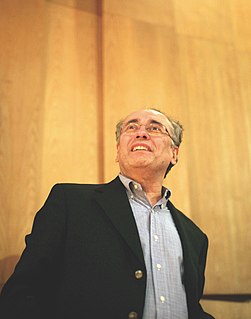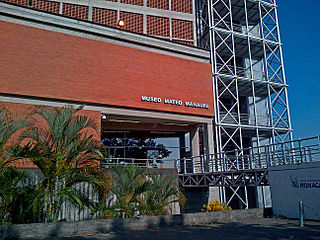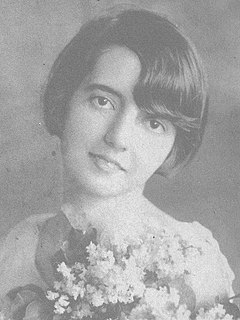Related Research Articles

Abstract art uses visual language of shape, form, color and line to create a composition which may exist with a degree of independence from visual references in the world. Western art had been, from the Renaissance up to the middle of the 19th century, underpinned by the logic of perspective and an attempt to reproduce an illusion of visible reality. By the end of the 19th century many artists felt a need to create a new kind of art which would encompass the fundamental changes taking place in technology, science and philosophy. The sources from which individual artists drew their theoretical arguments were diverse, and reflected the social and intellectual preoccupations in all areas of Western culture at that time.

Jesús Rafael Soto was a Venezuelan op and kinetic artist, a sculptor and a painter.

Alejandro Otero was a Venezuelan painter of Geometric abstraction, a sculptor, a writer and a cultural promoter. He was a founding member of the Los Disidentes group.

Gertrud Louise Goldschmidt, known as Gego, was a modern Venezuelan visual artist. Gego is perhaps best known for her geometric and kinetic sculptures made in the 1960s and 1970s, which she described as "drawings without paper".
Patricia van Dalen, is a Miami based visual artist, with a career that spans over thirty five years, dedicated to abstract painting, ephemeral site-specific installations, and designing permanent works for public places and private architectural spaces.
Concrete art was an art movement with a strong emphasis on geometrical abstraction. The term was first formulated by Theo van Doesburg and was then used by him in 1930 to define the difference between his vision of art and that of other abstract artists of the time. After his death in 1931, the term was further defined and popularized by Max Bill, who organized the first international exhibition in 1944 and went on to help promote the style in Latin America. The term was taken up widely after World War 2 and promoted through a number of international exhibitions and art movements.
Madí is an international abstract art movement initiated in Buenos Aires in 1946 by the Hungarian-Argentinian artist and poet Gyula Kosice, and the Uruguayans Carmelo Arden Quin and Rhod Rothfuss.

Milton Becerra is a Venezuelan artist who pioneered land art in Venezuela in the 1970s.

Diogenes Rivas is a dedicated Venezuelan composer as well as a researcher of contemporary music. Additionally, he devotes time to teaching and the training of young composers. Rivas is the co-founder and Artistic Director of the Festival Atempo – Caracas and Artistic Director of the Paris Nuit d’Atempo.

Harry Abend, OFM was a Polish-born Venezuelan sculptor and architect. Abend immigrated to Venezuela in 1948 and embarked on his sculpture practice in 1958 under the guidance of Miguel Arroyo while also studying architecture at the Universidad Central de Venezuela. In 1963, at the age of 26, Abend received the National Sculpture Prize of Venezuela for his work "Forma" 1961. In 1964, he participated in a three-month workshop led by British sculptor Kenneth Armitage. In 1976 Abend moved to London where he continued developing his work and exhibited in galleries such as the Roundhouse Gallery and the Hayward Gallery. Around this time Abend began to receive commissions to stage interventions in urban and architectural environments, such as the cement mural on the façade of the Teatro Teresa Carreño, and the interior design of the Sala Plenaria in the east tower of Parque Central, both in Caracas. A selection of his solo shows include Esculturas, Museo de Arte Moderno, Río de Janeiro (1968); three exhibitions at Sala Mendoza, Caracas ; Electrum Gallery, London (1977); Saint James Piccadilly Festival, London (1981); a retrospective at the Museo de Arte Moderno Jesús Soto, Ciudad Bolívar (2002); Museo de Arte Acarigua Araure, Acarigua (2003); Museo Kern Unión Israelita de Caracas (2012); Galería GBG ARTS, Caracas and Henrique Faria, New York. He lived and worked in Caracas.

Informalism or Art Informel is a pictorial movement from the 1943–1950s, that includes all the abstract and gestural tendencies that developed in France and the rest of Europe during the World War II, similar to American abstract expressionism started 1946. Several distinguishing trends are identified within the movement such as lyrical abstraction, matter painting, New Paris School, tachisme and art brut. The French art critic Michel Tapié coined the term "art autre" in the homonymous book published in 1952 in relation to non-geometric abstract art.

Oswaldo Vigas was a Venezuelan artist, best known as a painter and muralist. His work includes painting, sculpture, prints, drawings, ceramics and tapestries. His artwork was created between France and Venezuela, and it's an original synthesis of the cultural roots of Latin America and the latest artistic currents of modernity. He has had over one hundred solo exhibitions and is represented in numerous public institutions and private collections around the world. He is predominantly recognized as a self-taught artist and painter.

Colección Patricia Phelps de Cisneros (CPPC) is a privately held Latin American art organization based in Venezuela and New York City founded by Patricia Phelps de Cisneros and Gustavo Cisneros.

Mercedes Clementina Marta del Carmen Pardo Ponte, known as Mercedes Pardo was a Venezuelan abstract art painter.

Rafael Honorio Caupolican Ovalles Colmenares was a controversial Venezuelan writer. He belonged to the avant-garde period of the sixties and was influenced by French Surrealism and American Beatnik.
Dolores "Loló" Soldevilla Nieto (1901–1971) was a Cuban visual artist primarily known for her role in concrete art.
Grupo Ruptura was created by a collection of artists who sought to advance modern art in Brazil in the 1950s. Together, they held an exhibition entitled Ruptura at the São Paulo Museum of Modern Art in 1952. The group embraced concrete art as a break from traditional naturalistic painting popular in Brazil at the time. Grupo Raptura's works are often characterized by strong geometric shapes and bold colors.

Venezuelan artist Mateo Manaure was commissioned to create pieces for the University City of Caracas.

Mateo Manaure was a Venezuelan modern artist. In Venezuela he is considered a master of abstractionism, and is known for his works in the University City of Caracas and for creating the largest glass mural in the world.

Aimée Battistini was a Venezuelan painter.
References
- 1 2 3 4 ""De nuevo" Los Disidentes / C.G.B Full Record". icaadocs.mfah.org. Archived from the original on 2015-10-27. Retrieved 2019-10-12.
- ↑ "El folleto "Los Disidentes" tiene por mision esencial dar testimonio Full Record". icaadocs.mfah.org. Archived from the original on 2019-06-21. Retrieved 2019-10-12.
- ↑ "Embracing Modernity: Venezuelan Geometric Abstraction". Issuu. Retrieved 2019-10-12.